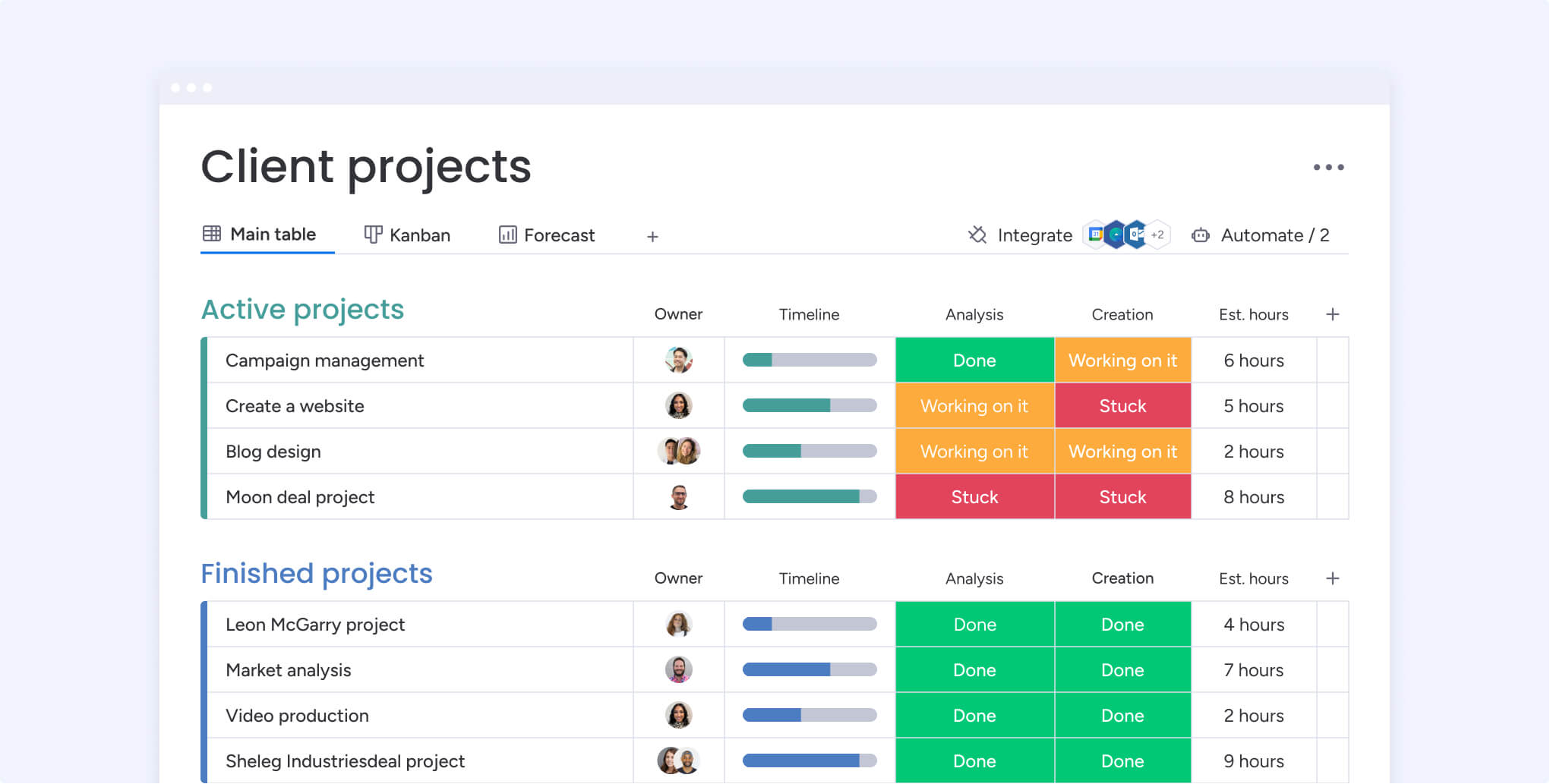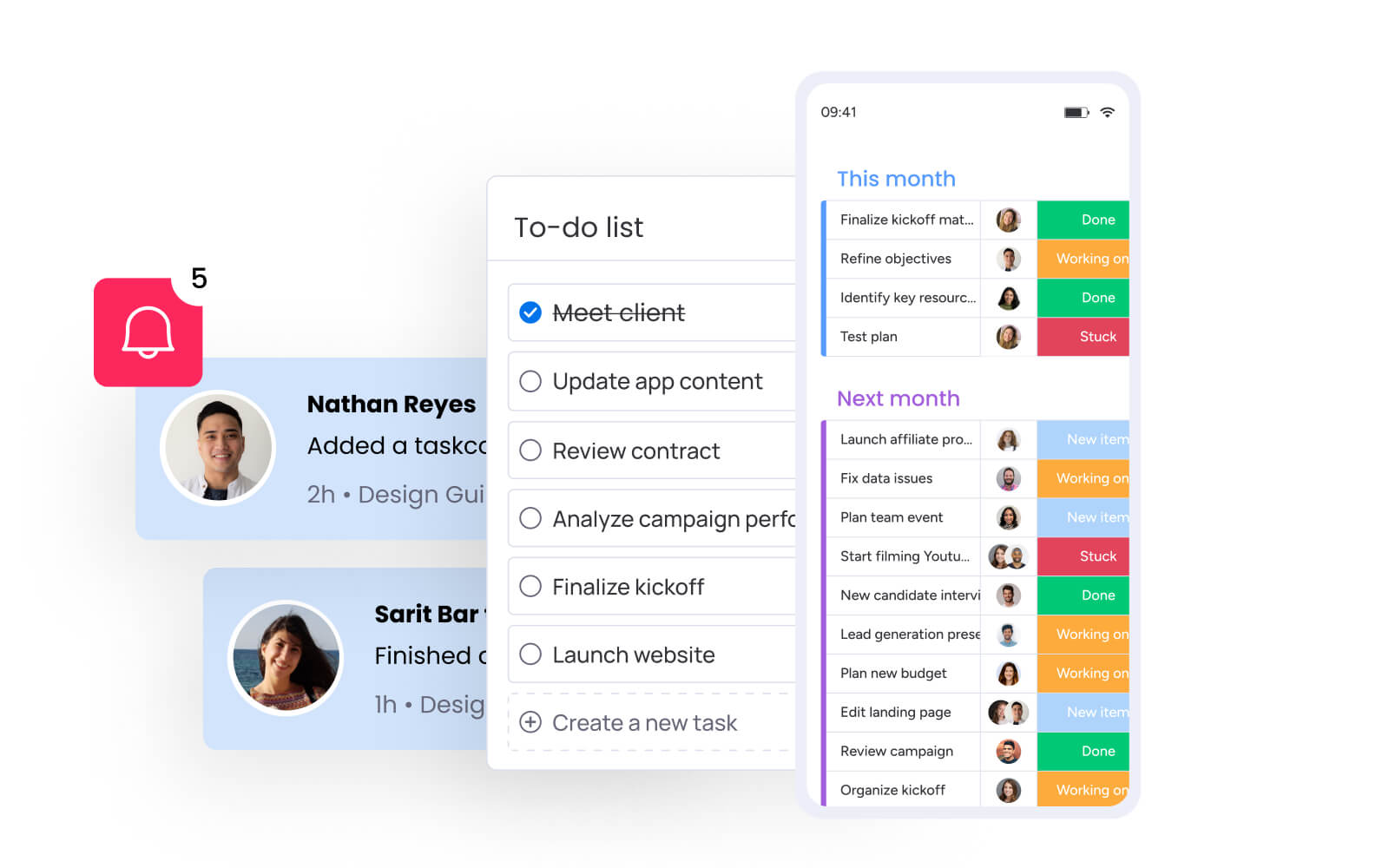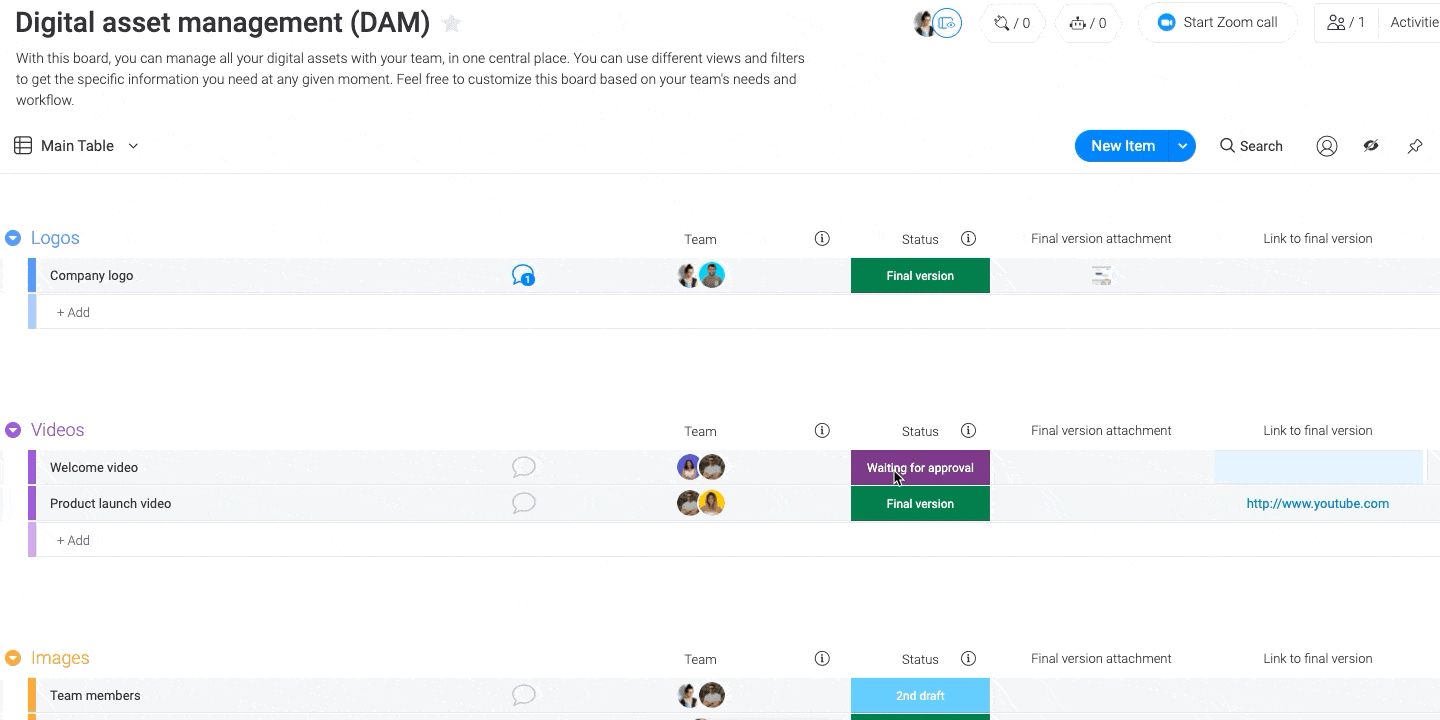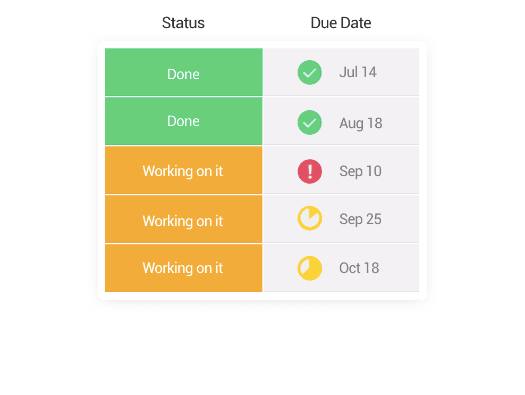Completing deliverables marks only part of a project’s success. The real value comes from how effectively the work is wrapped up, documented, and handed over. A well-executed project closeout process ensures that outcomes are verified, lessons are captured, and all administrative and contractual details are finalized before the team moves on.
The closeout phase acts as a bridge between completion and improvement. It confirms that objectives were met, budgets balanced, and stakeholders satisfied while transforming project insights into organizational learning. This structured approach also strengthens compliance and accountability through clear documentation, reducing risk in future initiatives.
This article explores eight essential steps for closing out projects successfully, along with practical tips, key documentation requirements, and customizable templates. The result is a repeatable process that turns every project ending into an opportunity for growth and long-term success.
Key takeaways
- Protection and learning: effective project closeout safeguards the organization from legal risk while capturing insights that make future projects faster and more successful.
- Follow a structured 8-step process: verify deliverables, secure approvals, finalize budgets, release resources, document lessons, archive files, hold review meetings, and celebrate team success.
- Plan adequate closeout time: avoid costly oversights by including dedicated closeout phases in project schedules and ensuring lessons learned sessions are never skipped.
- Simplify workflows with monday work management: automated tracking, real-time visibility, and customizable templates streamline closeout activities across multiple projects.
- Finish with intent: proper closeout formally completes all work and transfers deliverables, marking a clear transition from execution to long-term value.
What is project closeout?
Project closeout is the formal process of completing all project activities, securing final approvals, and transitioning deliverables to stakeholders. With projects accounting for about 30% of economic activity in developed nations, mastering every phase — including the final one — is critical.
This means verifying that everything promised has been delivered, all contracts are settled, and knowledge is captured for future use.
It’s easier to think of closeout as the difference between abandoning a project and properly finishing it. When you close out a project correctly, you protect your organization from legal issues, capture valuable lessons, and set up future projects for success.
Core elements of project closeout
Project closeout involves several interconnected activities that happen in a specific order. First, you verify that all deliverables meet the original requirements. Then you handle the administrative work — closing contracts, processing final payments, and archiving documents with a project closure template.
The knowledge transfer component sets closeout apart from simply stopping work. You document what worked, what didn’t, and what you’d do differently next time in a post implementation review. This institutional memory becomes invaluable when similar projects arise.
Core elements that make closeout effective include:
- Formal completion verification: confirming all work meets quality standards.
- Administrative closure: finalizing contracts, budgets, and legal documentation.
- Knowledge capture: recording lessons learned and best practices.
- Resource release: returning team members and equipment to the organization.
Project closeout across industries
Different industries have unique closeout requirements, but the principles remain the same across project management methodologies.
For example, construction project management requires inspections, punch lists, and warranty documentation. Software development focuses on code handoff and deployment guides. Conversely, marketing campaigns need performance analysis and asset archiving.
To manage these differences effectively, a flexible system is essential. The adaptable structure of monday work management supports industry-specific workflows while maintaining overall consistency. Teams can customize templates, automate documentation, and track closeout milestones in one shared workspace, ensuring that every project ends with the same level of accuracy and visibility.

How does project closeout drive business success?
Project closeout protects your investment and creates a competitive advantage. With over a third of large organizations running a major transformation program at any given time, companies that rush through closeout consistently miss opportunities to reduce risk and improve future performance.
Financial protection and compliance benefits
Proper closeout creates an audit trail that satisfies regulators and protects against disputes. When you document deliverable acceptance, payment terms, and warranty periods, you avoid costly disagreements months later.
This protection extends beyond compliance. Clear handoff documentation prevents operational surprises when team members leave. Detailed records of known issues and ongoing commitments help new teams pick up where others left off.
Knowledge transfer and organizational learning
Every project generates insights that can improve future work. But without systematic capture, these lessons disappear when teams disband. Documented lessons learned create a knowledge base that helps others avoid similar pitfalls, often captured in a post mortem template.
The most valuable insights often come from project management challenges overcome during execution. When you capture specific practices to continue or avoid, you build organizational capability that compounds over time.
Setting up future projects for success
Archived documentation and refined processes from closeout provide a foundation for future planning and inform project design. When teams understand the actual effort required for similar work, they create more accurate estimates and identify risks earlier.
monday work management centralizes this knowledge, making it accessible when teams need it. Past project data informs new planning, helping you move faster with greater confidence.
Project closeout vs project closure: key differences
Project closeout and project closure serve different purposes in ending a project. Closeout is the comprehensive process spanning weeks or months. Closure is the final administrative act that officially ends the project.
Understanding this distinction helps you allocate appropriate time and resources. Closeout ensures nothing is overlooked and all value is captured. Closure provides the definitive endpoint for resource allocation and team disbandment.

8 essential steps to close out a project successfully
Closing a project is more than checking off final tasks. It is about wrapping up work with intention, confirming that every commitment has been met, and setting the stage for future success. A structured closeout process helps teams finish confidently while capturing the knowledge, documentation, and insights that make the next project even stronger.
The following eight steps outline a clear path from verification to recognition. Each step builds on the last to ensure nothing is overlooked:: from confirming deliverables and securing sign-offs to reflecting on lessons learned and celebrating achievements.
Step 1: verify all deliverables are complete
Start by confirming that every deliverable meets its requirements. This goes beyond checking boxes — you need thorough reviews from multiple perspectives.
Technical teams assess functionality. Business stakeholders evaluate alignment with needs. End users validate usability. Document who reviewed what and how issues were resolved.
Step 2: secure stakeholder acceptance and sign-offs
Formal sign-off confirms that deliverables meet expectations and protects the project from future disputes. Clear criteria and documentation keep this process efficient and transparent.
- Identify key approvers: confirm who needs to review and sign off on final deliverables.
- Define acceptance standards: outline clear, measurable criteria for approval.
- Allow adequate review time: schedule reviews early to prevent last-minute delays.
- Document approvals and feedback: maintain records to ensure accountability and traceability.
Step 3: finalize budget and process payments
Reconcile actual costs against budgets and document any variances. This analysis helps improve future estimates and provides insights for similar projects.
Process all financial transactions — both payments to vendors and collections from clients. Complete this step before considering the project financially closed.
Step 4: reallocate resources and release team members
Closing a project means more than moving people to new work. It is an opportunity to evaluate performance, recognize contributions, and plan transitions that align with both organizational goals and individual development.
- Conduct evaluations: gather feedback on performance and document insights that inform future staffing decisions.
- Plan smooth transitions: reassign team members based on skills, interests, and upcoming project needs to maintain productivity.
- Gain visibility into capacity: workload views in platforms like monday work management make it easy to see current assignments and available bandwidth, supporting informed and balanced reallocation decisions.
Step 5: capture and document lessons learned
Focus lessons learned sessions on actionable insights rather than general observations by creating an after action report. What specific practices should you continue? What should you avoid? What needs modification?
Structure these sessions to extract practical guidance. Use consistent documentation formats that make insights easy to find and apply in future projects.
Step 6: archive project files and documentation
Organize files logically with clear naming conventions. Follow retention policies while ensuring future accessibility for audits or similar projects.
Maintain version control to preserve final documents. Set access permissions that balance security with the need for authorized retrieval.
Step 7: host your project closeout meeting
Bring key stakeholders together to review completion, discuss lessons learned, and address remaining issues. This meeting marks the official transition from active management to ongoing support.
Cover deliverable acceptance, budget reconciliation, resource transitions, and any ongoing commitments. Assign clear owners to any follow-up actions.
Step 8: celebrate achievements and recognize contributions
Finally, recognition reinforces positive behaviors and motivates teams for future projects: this is really important to note as employees who understand how success is measured are a lot more likely to feel motivated. Acknowledge both individual contributions and team achievements in ways that fit your organizational culture.
Document these achievements as part of the project record. This supports future performance evaluations and career development discussions.

Critical documents for project closeout
Successful project closeout depends on clear, well-organized documentation that confirms completion, captures insights, and supports future work. These records provide accountability, enable smoother transitions to operations, and preserve knowledge for future teams.
The key document types below outline what to prioritize, ensuring that every project ends with complete and reliable records.
Project closeout reports and executive summaries
Create reports tailored to different audiences. Executive summaries focus on business impact and strategic insights. Detailed reports give operational teams comprehensive information for future reference.
Include project objectives and achievement levels, budget performance analysis, schedule adherence, quality metrics, and actionable lessons learned. Visual elements make complex information more accessible.
Financial records and budget reconciliation
Accurate financial documentation confirms that a project is fully settled and provides insights that strengthen future budgeting. Keep all financial data consistent, transparent, and easy to reference.
- Record all financial activity: include expenses, revenue, budget transfers, invoices, payments, and contract modifications.
- Reconcile actuals vs. planned costs: compare final spending to original estimates to identify variances.
- Analyze discrepancies: explain significant cost differences and document lessons for improving future estimates.
Technical documentation and warranties
Technical project handoff ensures smooth transitions to operations teams. Include system architecture, configuration details, maintenance procedures, and troubleshooting guides.
Document warranty periods, coverage details, and claim procedures. Clear technical documentation prevents operational disruptions after project completion.
Formal acceptance and approval forms
Formal sign-off marks the official completion of project deliverables, confirming that all requirements have been met and protecting against future disputes. Each form should clearly outline deliverables, acceptance criteria, exceptions, authorized signatures, and reference documents to ensure transparency.
Managing this process manually often leads to version confusion or approval delays. Using platforms such as monday work management to manage digital workflows keeps everything centralized — routing approvals automatically, tracking stakeholder responses, and storing signed documentation securely for future reference.

Your complete project closeout checklist template
A project rarely finishes itself. A clear, step-by-step checklist keeps closeout activities organized and verifiable from start to finish. The sections below outline what to plan, execute, and review to ensure every requirement is met before final closure.
Pre-closeout planning activities
Start planning before project end to avoid last-minute scrambles. Key activities include:
- Review objectives and deliverables: confirm what needs completion and acceptance.
- Identify required approvers: ensure availability for reviews and sign-offs.
- Schedule closeout meetings: reserve stakeholder time early.
- Prepare templates: set up standard formats for consistent documentation.
- Notify external parties: inform vendors and contractors of timelines.
Active closeout execution
Follow the eight-step process with clear deadlines for each activity:
- Conduct deliverable reviews: verify outputs meet all requirements.
- Obtain written acceptances: secure sign-offs from all approvers.
- Complete financial reconciliation: analyze budgets and process payments.
- Facilitate lessons learned: capture actionable insights.
- Archive documentation: organize files per retention policies.
- Transition resources: complete evaluations and reassignments.
Post-closeout monitoring
Some activities extend beyond formal closure:
- Monitor warranties: track and respond to claims.
- Gather additional feedback: check stakeholder satisfaction.
- Update knowledge bases: incorporate lessons into standard processes.
- Review process effectiveness: identify closeout improvements.
5 common project closeout mistakes that cost organizations
Project closeout is often underestimated, which makes it one of the most common sources of project risk. When critical steps are rushed or skipped, even successful projects can leave behind gaps that affect budgets, compliance, and future performance. The examples below highlight where teams most often go wrong: and how to prevent project failure.
Racing through final steps
Time pressure leads to rushed closeout, resulting in missed requirements and incomplete documentation. These mistakes surface later when they’re expensive to fix.
Build adequate closeout time into project schedules. Treat this phase as critical rather than administrative overhead.
Missing critical documentation
Incomplete documentation creates legal risks and loses institutional knowledge. Critical documents include contracts, approvals, specifications, and lessons learned.
Modern platforms like monday work management can help prevent gaps through automated workflows and centralized storage that ensures nothing gets overlooked.
Bypassing lessons learned sessions
Skipping lessons learned means repeating mistakes. Organizations that don’t capture insights fail to build knowledge that improves future performance.
Invest time in structured facilitation to extract specific, actionable practices rather than general observations.
Neglecting stakeholder communication
Poor closeout communication damages relationships and delays approvals.
Stakeholders need proactive updates about status, remaining activities, and their responsibilities: this is a particular challenge in large enterprises, where only 61% of employees report satisfaction with transparency.
Tailor communication to different needs — executives want summaries while operations teams need detailed handoff information.
Failing to release resources properly
Improper resource release creates inefficiencies and reduces morale. Include performance feedback and career discussions in your transition planning.
Balance business needs with individual development goals to support retention and engagement.
Transform your project closeout process with monday work management
Managing closeout manually becomes increasingly difficult as projects multiply and timelines tighten. Missed documentation, delayed approvals, and inconsistent reporting can all undermine even the most successful initiatives.
A connected platform simplifies every stage of closeout by automating repetitive tasks, tracking progress in real time, and keeping all project data organized in one place. With monday work management, teams gain the structure and visibility needed to close projects confidently and move seamlessly to the next.
Automate repetitive closeout activities
Set up workflows that automatically send approval requests, update documentation status, and notify stakeholders. Automated reminders keep activities on track without manual follow-up.
Complex workflows can route documents, assign tasks based on project type, and update multiple systems simultaneously.
Track multiple project closeouts in real-time
Dashboard views give executives and PMO teams visibility into all ongoing closeouts. Quickly identify projects needing attention, resource bottlenecks, and improvement opportunities.
Portfolio reporting helps you benchmark performance, identify best practices, and allocate resources effectively across all projects.
Standardize with customizable templates
Templates ensure consistency while allowing customization for different project types. Start with proven processes and adapt them without starting from scratch.
As you improve processes, update templates to reflect new requirements. This captures organizational learning and makes it available to all teams.
Accelerate closeout with monday AI
monday AI transforms how teams handle project closeout documentation by generating comprehensive reports, executive summaries, and lessons learned documents in seconds rather than hours.
Ask monday AI to analyze project data and suggest improvement opportunities based on historical patterns. This intelligent assistant can draft stakeholder communications, summarize meeting notes, and help identify risks that might otherwise be missed during closeout.
Connect your entire tech stack with integrations
Integrations within monday work management keep every part of the closeout process connected, eliminating manual updates and reducing the risk of errors.
- Unify collaboration tools: connect systems like Jira, Slack, Microsoft Teams, and Google Drive so documentation, status updates, and stakeholder notifications sync automatically.
- Simplify financial closeout: integrate with accounting and ERP platforms such as QuickBooks to streamline reconciliation and ensure data accuracy.
- Create a connected workspace: maintain a single source of truth across all systems, giving teams complete visibility into progress and approvals without switching between tools.
Frequently asked questions
How long does project closeout typically take?
The time it takes for project closeout to be completed varies based on complexity and industry requirements. Simple projects may complete closeout in days, while complex initiatives require several weeks or months for proper completion of all activities and documentation.
What's the best way to handle closeout for cancelled projects?
Cancelled projects still require formal closeout to capture lessons learned, reconcile finances, and release resources. The process may be abbreviated but should address key activities to protect the organization and inform future decisions about similar initiatives.
Who owns project closeout when the project manager leaves?
When the project manager leaves before closeout, responsibility typically shifts to a designated successor or the PMO. This ensures continuity and completion of all required activities without gaps in accountability or documentation.
Can you automate project closeout processes?
Many administrative closeout tasks can be automated, including document routing, status tracking, and approval workflows. However, activities requiring human judgment like lessons learned facilitation and stakeholder relationship management still need personal involvement.
What if stakeholders won't approve project completion?
When stakeholders resist approval, document all communications and address concerns transparently through additional reviews or modifications. Escalate unresolved issues to appropriate management levels while maintaining clear contracts and acceptance criteria to prevent disputes.
How do you manage closeout for multiple simultaneous projects?
Managing multiple project closeouts requires centralized tracking, standardized processes, and clear resource allocation. Use portfolio dashboards to monitor progress, identify bottlenecks, and ensure consistent quality across all closeouts while maintaining appropriate focus on each project's unique requirements.
